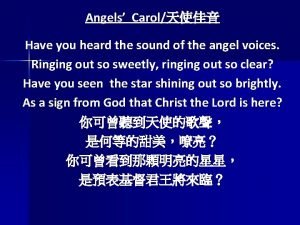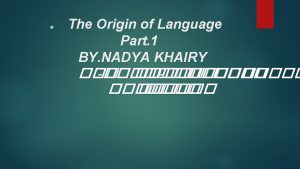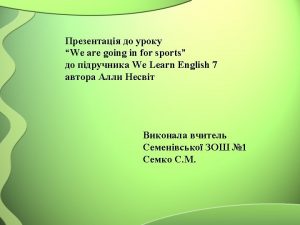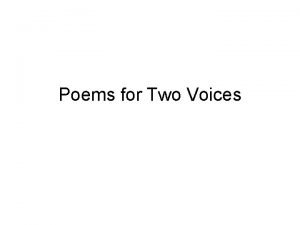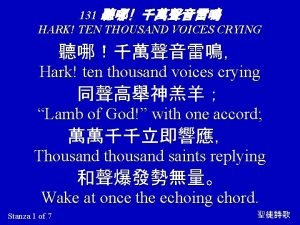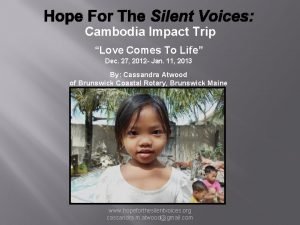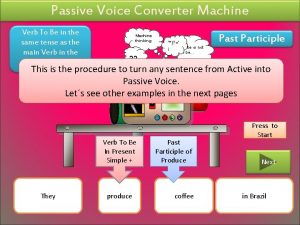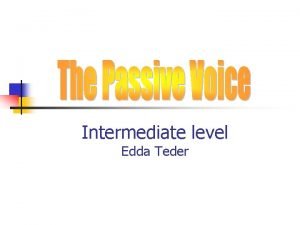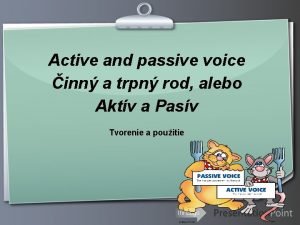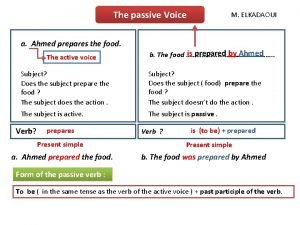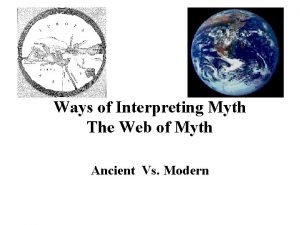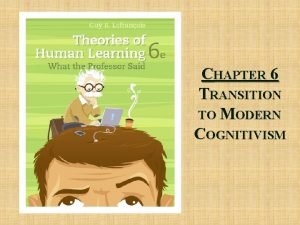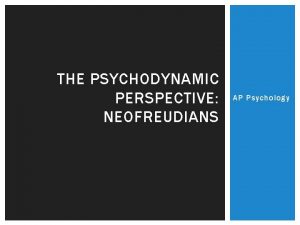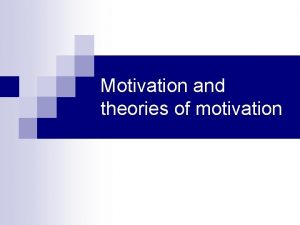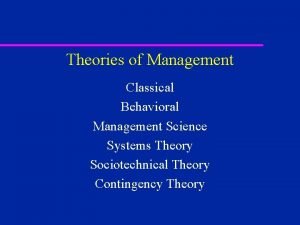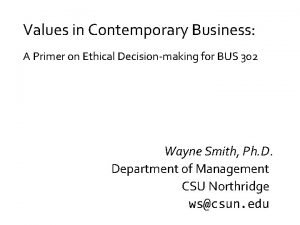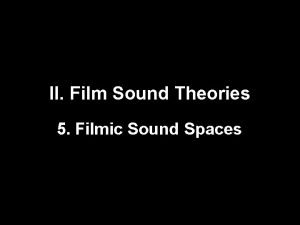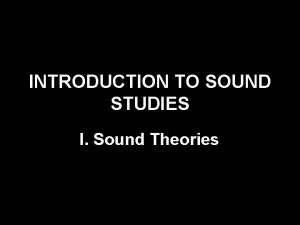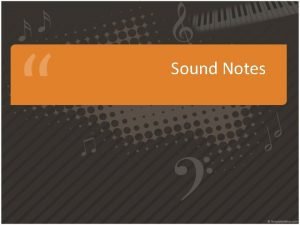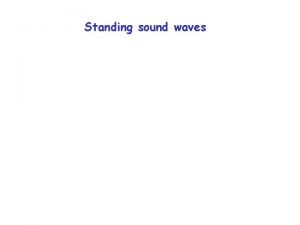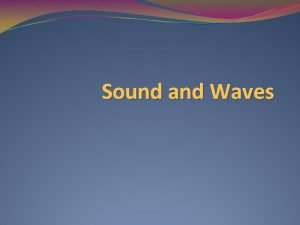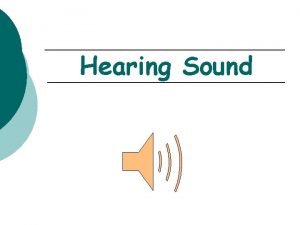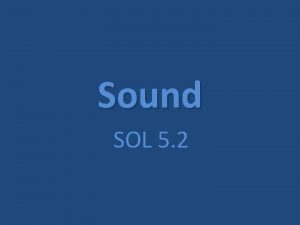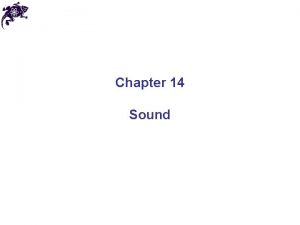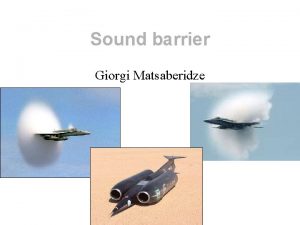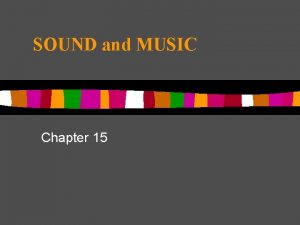I Sound Theories 3 Voices Voice is Voice































- Slides: 31

I. Sound Theories 3. Voices

Voice is:

Voice is: Self-expression

Voice is: Self-expression Subjective

Voice is: Self-expression Subjective Spirit

Voice is: Self-expression Subjective Spirit Consciousness

Voice is: Self-expression Subjective Spirit Consciousness Language

Voice is: Self-expression Subjective Spirit Consciousness Language Speech

Voice is: Self-expression Subjective Spirit Consciousness Language Speech Power

Voice is: Self-expression Subjective Spirit Consciousness Language Speech Power Presence

Voice is: Self-expression Subjective Spirit Consciousness Language Speech Power Presence Unique

Voice is: Self-expression Subjective Spirit Consciousness Language Speech Power Presence Unique Plural

2 Theories of The Voice: 1. Presence / difference (Derrida) 2. The grain of the voice (Barthes)

Voice in: • • Music, singing (Weheliye) Philosophy (Cavarero, also Derrida) Media and emotion (Smith) Language (Dolar)

1. Voice: Presence / Difference (Jacques Derrida) • Derrida is thinking about voice in relationship to Phenomenology (Husserl, also Ihde) • Auto-affection: the operation of “hearing oneself speak” is unique: universal and internal (p. 497)

• The essence of the voice: “is the sole case to escape the distinction between what is worldly and what is transcendental; by the same token, it makes that distinction possible. ” (p. 498)

• Voice as consciousness: “To speak to someone is doubtless to hear oneself speak, to be heard by oneself; but, at the same time, if one is heard by another, to speaks is to make him repeat immediately in himself the hearing-oneself-speak in the very form in which I effectuated it. This immediate repetition is a reproduction of pure auto-affection without the help of anything external. ” (p. 498)

• Voice as consciousness: “To speak to someone is doubtless to hear oneself speak, to be heard by oneself; but, at the same time, if one is heard by another, to speaks is to make him repeat immediately in himself the hearing-oneself-speak in the very form in which I effectuated it. This immediate repetition is a reproduction of pure auto-affection without the help of anything external. ” (p. 498)

• “This auto-affection is no doubt the possibility for what is called subjectivity or the for-itself, but, without it, no world as such would appear. ” (p. 498)

• “This auto-affection is no doubt the possibility for what is called subjectivity or the for-itself, but, without it, no world as such would appear. ” (p. 498)

2. The Grain of the Voice (Roland Barthes) • “The ‘grain’ is the body in the voice as it sings, the hand as it writes, the limb as it performs… listen to my relation with the body of the man or woman singing or playing and that relation is erotic – but in no way ‘subjective’. ” (p. 509) • Dual production of language (text) and music – history of music vs. theory of the text

• Pheno-text and geno-text (from Kristeva) • The pheno-song: “covers all phenomena, all the features which belongs to the structure of the language being sung, the rules of the genre… in short, everything in the performance that is in the service of communication, representation, expression…” (p. 506)

• The geno-song: “is the volume of the singing and speaking voice, the space where signification germinate ‘from within the language and in its very materiality’… It is, in very simple word but which must be taken seriously, the diction of the language. ” (p. 506)

Listening exercise: listen to different versions of Strange Fruit (1937), analyze / play using Derrida and Barthes’ theories about voice.

3. Voice in Black Popular Music (Alexander Weheliye) • The use of sound technologies in popular R&B music (“cell-phone” effect): “voice distortion devices as both technological and ‘expressive extensions of the performing body. ’” (p. 512) • “In the move from the vocoder to the vocoder effect, the centrality of the human voice dissipates throughout the desiring machine that is R&B. ” (p. 515)

• Making race central to theories of posthumanism. (p. 516)

For Thursday: Look for versions of Strange Fruit that evoke one or more of the key concepts from the reading you chose: • Uniqueness (Cavarero) • Uncanny (Smith) • Pre/Postlinguistic (Dolar) Post on Sakai along with your discussion questions by 10 PM Wednesday. You can see examples posted by past students on the class blog.


“Voice is sound, not speech. But speech constitutes its essential destination. What is therefore at stake in any inquiry into the ontology of the voice—where uniqueness and relationality come to the fore—is a rethinking, without metaphysical prejudices, of this destination. ” (Cavarero, p. 529)

“For Freud, the uncanny is particularly tied to the involuntary return to the same situation, something of particular pertinence to the experiences of the laugh track because of its nature as a tape loop: we hear the same laughs again and again. Indeed, the laugh track apparatus is an unlikely precursor to the tape-loop performances in modern avantgarde and popular music, even a kind of proto -sampler. ” (Smith, p. 535)

• “So the paradoxical facit would be that there may be no linguistics of the voice, yet the non-voice which represents the voice untamed by structure is not external to linguistics. Neither is the object voice which we are pursuing. ” (Dolar, p. 552)
 Have you heard the sound of the angels voices
Have you heard the sound of the angels voices Divine source theory of language
Divine source theory of language “a sound mind is in a sound body”
“a sound mind is in a sound body” Tiny astronauts
Tiny astronauts A graduation poem for two
A graduation poem for two Youth voices
Youth voices What is voice in grammar
What is voice in grammar Young voices toronto
Young voices toronto Men's voices ireland
Men's voices ireland Many voices one world
Many voices one world 5 voices myers-briggs
5 voices myers-briggs Chapter 9. voices and instrument families
Chapter 9. voices and instrument families Voices from the dust bowl
Voices from the dust bowl Is magical realism a genre
Is magical realism a genre Hark ten thousand voices crying
Hark ten thousand voices crying Faces and voices of recovery uk
Faces and voices of recovery uk Hope for the silent voices
Hope for the silent voices Hark ten thousand voices crying
Hark ten thousand voices crying Verb.oo
Verb.oo Hark ten thousand voices crying
Hark ten thousand voices crying London, 1802 theme
London, 1802 theme Active to passive voice converter
Active to passive voice converter Active voice passive voice present indefinite
Active voice passive voice present indefinite How to turn sentences into passive voice
How to turn sentences into passive voice Aktiv passiv voice
Aktiv passiv voice Passive voice food
Passive voice food What is a charter myth
What is a charter myth 6 theories of psychology
6 theories of psychology Psychodynamic perspective ap psychology
Psychodynamic perspective ap psychology Incentive theory
Incentive theory Behavioral management theory
Behavioral management theory Contemporary business definition
Contemporary business definition
